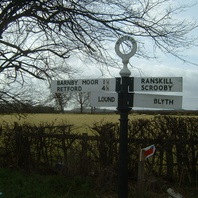
Viking Names
Ranskill
Ranskill, in the Bassetlaw Wapentake of Nottinghamshire, probably comes from the Old Norse male personal name Hrafn (which is also the word for ‘raven’) and the Old Norse element skjalf ‘seat, ledge, slope’. It is on a slight slope above the level ground.
Read More

Viking Names
Revesby
Revesby, in the Bolingbroke Wapentake of Lincolnshire, comes from the Old Norse male personal name Refr (which is also the word for ‘fox’) and the Old Norse element by ‘farm, settlement’.
Read More
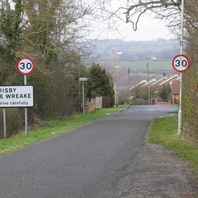
Viking Names
Frisby on the Wreake
Frisby on the Wreake, in the East Goscote Hundred of Leicestershire, takes its name from a Scandinavian form of an ethnonym Frisa (gen. pl.) ‘Frisians’ and the Old Norse element by ‘farmstead, village’. The affix ‘on the Wreake’ was added at a later date to distinguish this Frisby from another in the Gartree Hundred of Leicestershire and refers to the site’s location on the river, adjacent to Kirby Bellars. Traditionally, the place-name has been interpreted as referring to Frisians who took part in the Viking invasions. However, the exact implications of such a name are not yet fully understood and are the subject of ongoing work by Dr Jayne Carroll of the Institute for Name-Studies, University of Nottingham.
Read More
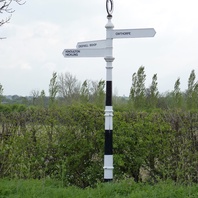
Viking Names
Owthorpe
Owthorpe, in the Bingham Wapentake of Nottinghamshire, comes from the Old Norse male personal name Úfi and the Old Norse element þorp ‘a secondary settlement, a dependent outlying farmstead or hamlet’.
Read More
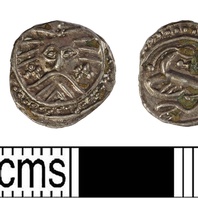
Viking Objects
Danish Silver Sceat (LIN-6C0EBC)
This silver sceat is classified as part of the Danish Woden/Monster Series X which date to around 710 – 800. The obverse depicts the head of Woden with crosses to either side of rounded beard and pellet above. The reverse depicts a monster facing left. These coins are considered to be associated with the early trading center at Ribe. It is very likely that they made their way to England by means of Vikings.
Read More

Viking Names
Grainsby
The first element of Grainsby, in the Haverstoe Wapentake of Lincolnshire, is of uncertain origin. It is likely the Old Norse male byname Grein, Old East Scandinavian Gren, from Old Norse grein, Old Danish gren ‘a branch’. Alternatively the element could be the Old Norse appellative grein ‘a branch (of a tree); a fork (of a river)’. This word survives in dialect as ‘a small valley forking off from another’, but there is nothing in the topography of Grainsby that supports this sense. The second element is Old Norse by ‘a farmstead, a village’.
Read More
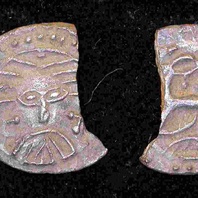
Viking Objects
Danish Silver Sceat (LEIC-5608D1)
This silver sceat is classified as part of the Danish Series X Type 31. The obverse depicts the head of Woden with crosses to either side of a rounded beard and pellet above. The reverse depicts a monster facing left. These coins are considered to be associated with the early trading center at Ribe in Denmark. It is very likely that they made their way to England by means of Vikings.
Read More
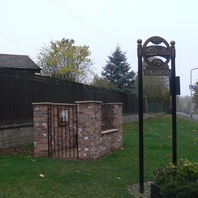
Viking Names
Tollerton
The place-name of Tollerton, in the Bingham Wapentake of Nottinghamshire, has suffered a good deal of corruption. Twelfth-century spellings of the name point to the Old Norse male personal name Þórleifr as the first element. Later there seems to have been confusion with another Old Norse male personal name, Þórleikr. The second element is Old English tun ‘an enclosure; a farmstead; a village; an estate’, making it a hybrid name.
Read More

Viking Names
Holme
Holme, in the Thurgarton Wapentake of Nottinghamshire, is a simplex name from Old Norse holmr ‘an island, an inland promontory, raised ground in marsh, a river-meadow’. This place is by the River Trent, and there are several other places by this name in the county. For more information about Holme and other place-names in the East Midlands, see the Lunchtime Talk Holme from Home? East Midland Place-Names and the Story of Viking Settlement.
Read More
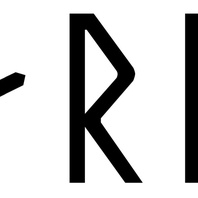
Viking Names
Gerd
The name Gerðr was found in Iceland in the tenth century, but only possibly found in Norway in place-names. It is also found in one Danish place-name. It is is the first element in the place-name Garriston, North Yorkshire and in Getheston, a field name, in Monk Bretton, West Yorkshire. Gerðr is from the Primitive Scandinavian garðiōʀ. Perhaps it is the female equivalent of the Old Norse male personal name Garðr from Old Norse garðr ‘yard, enclosure’, but used in the older sense of ‘protection’. Gerðr occasionally appears as a form of the male personal name, Giarðarr. Many female names, such as Þorgerðr are formed with -gerðr as the second element. Gerðr also appears in Old Norse mythology as the name of the giantess with whom the god Freyr falls in love.
